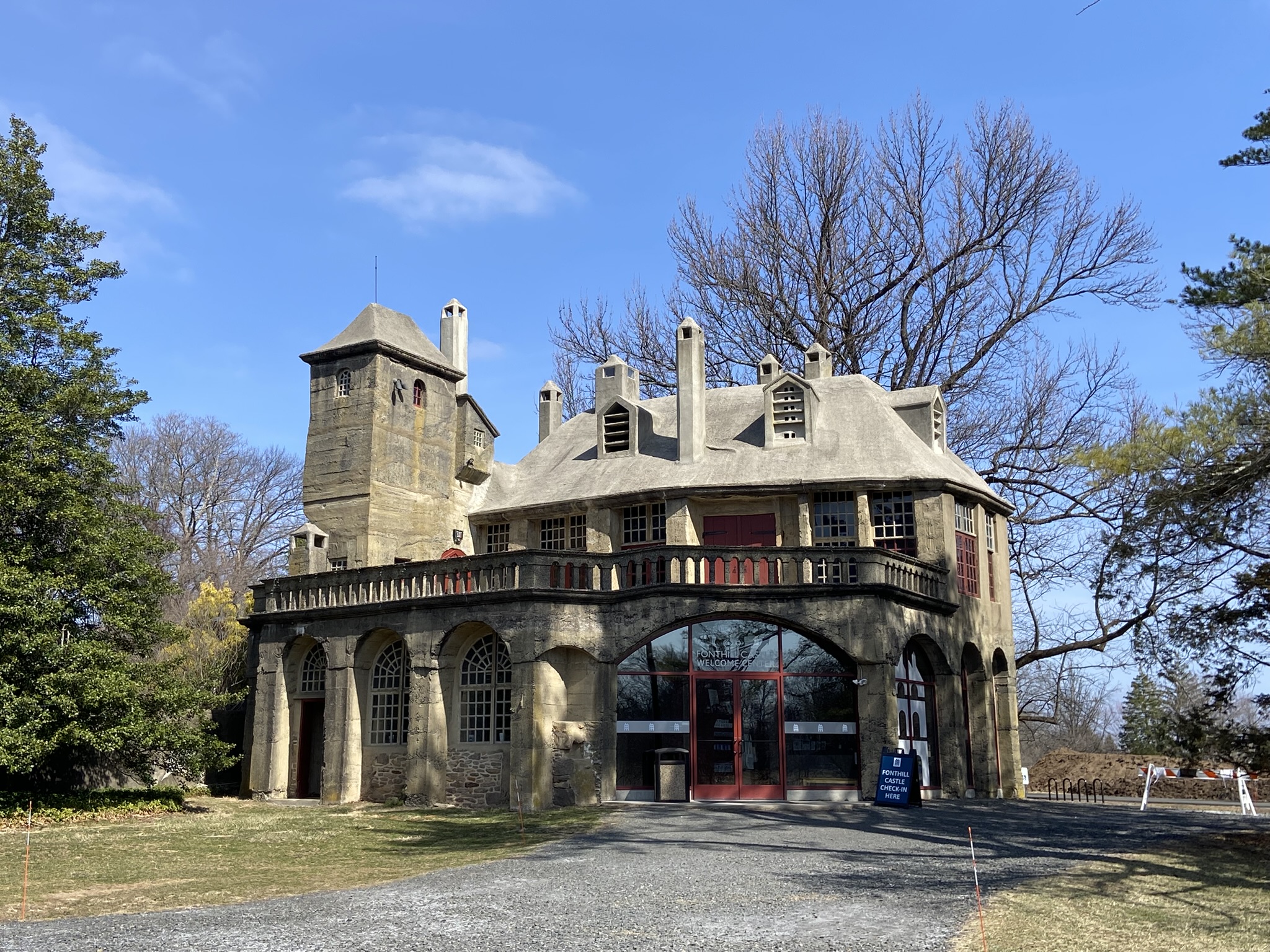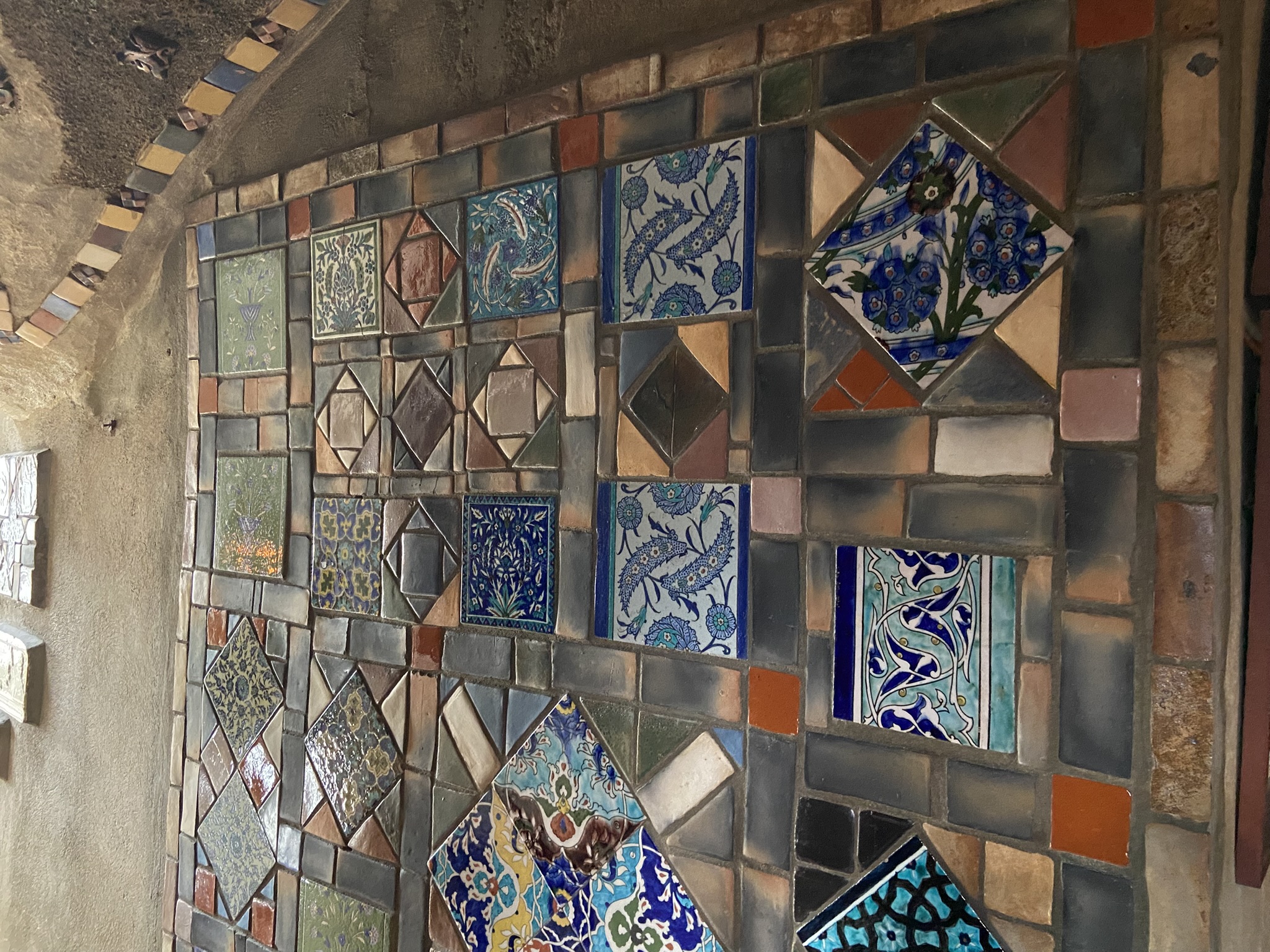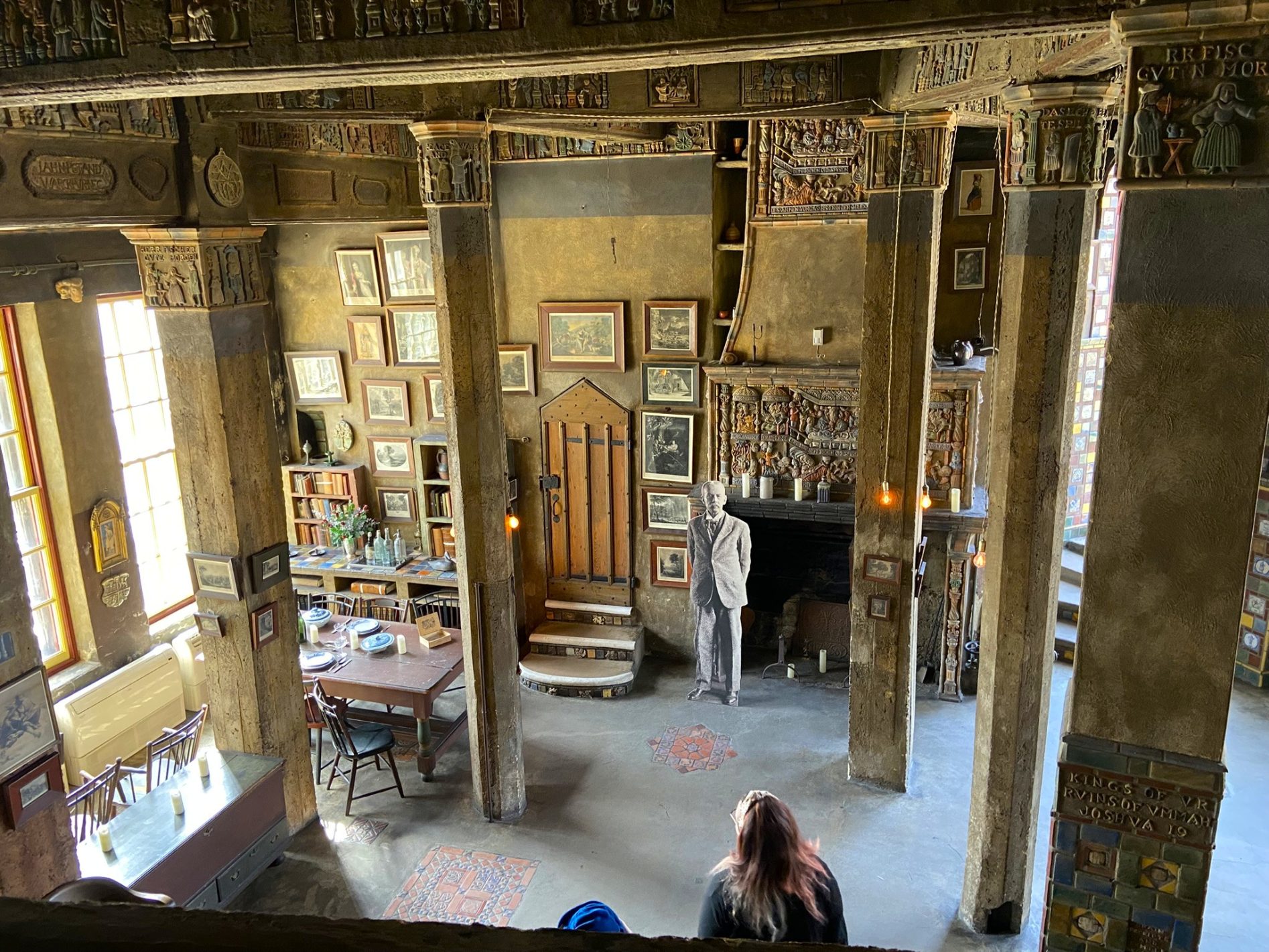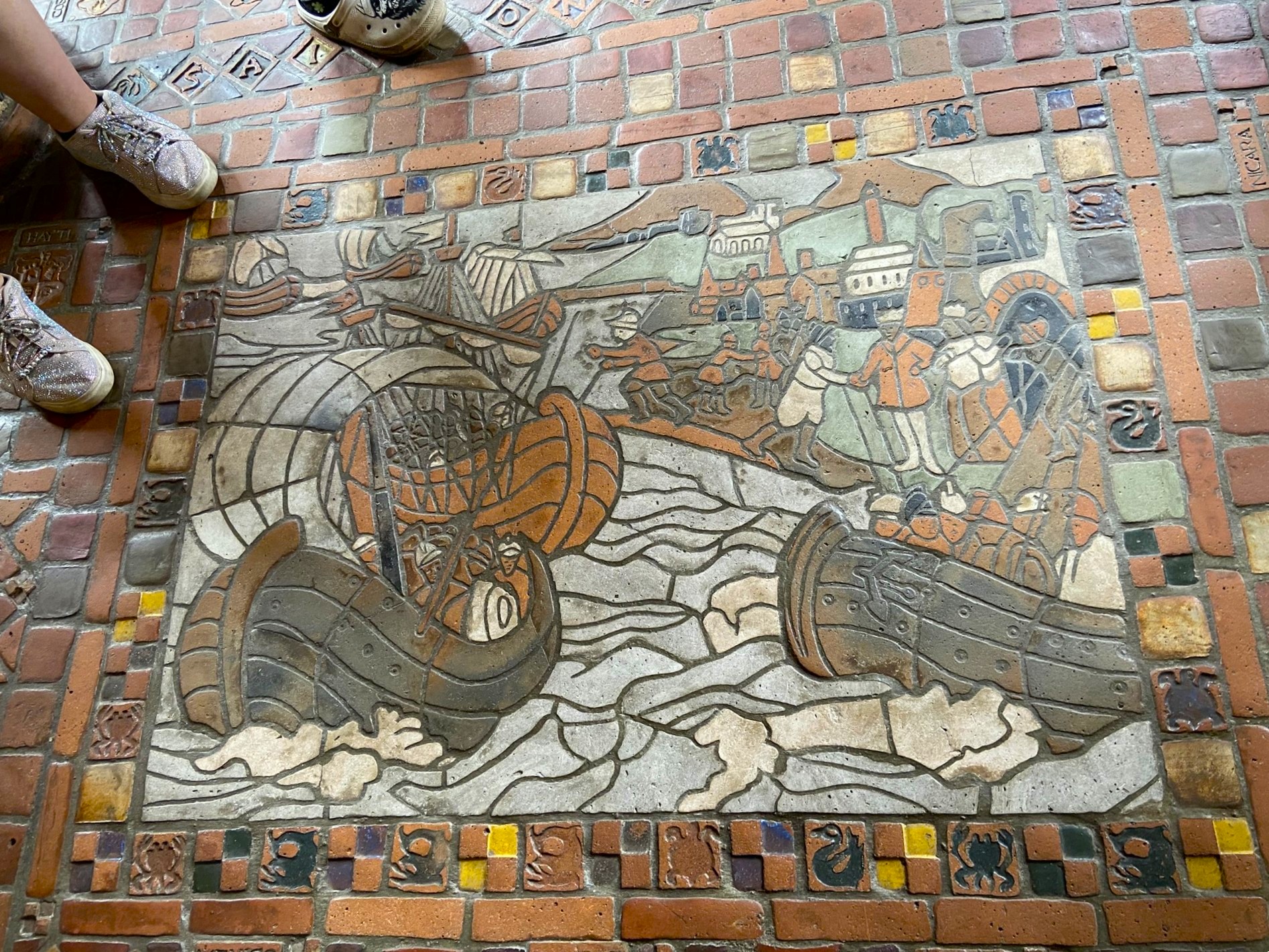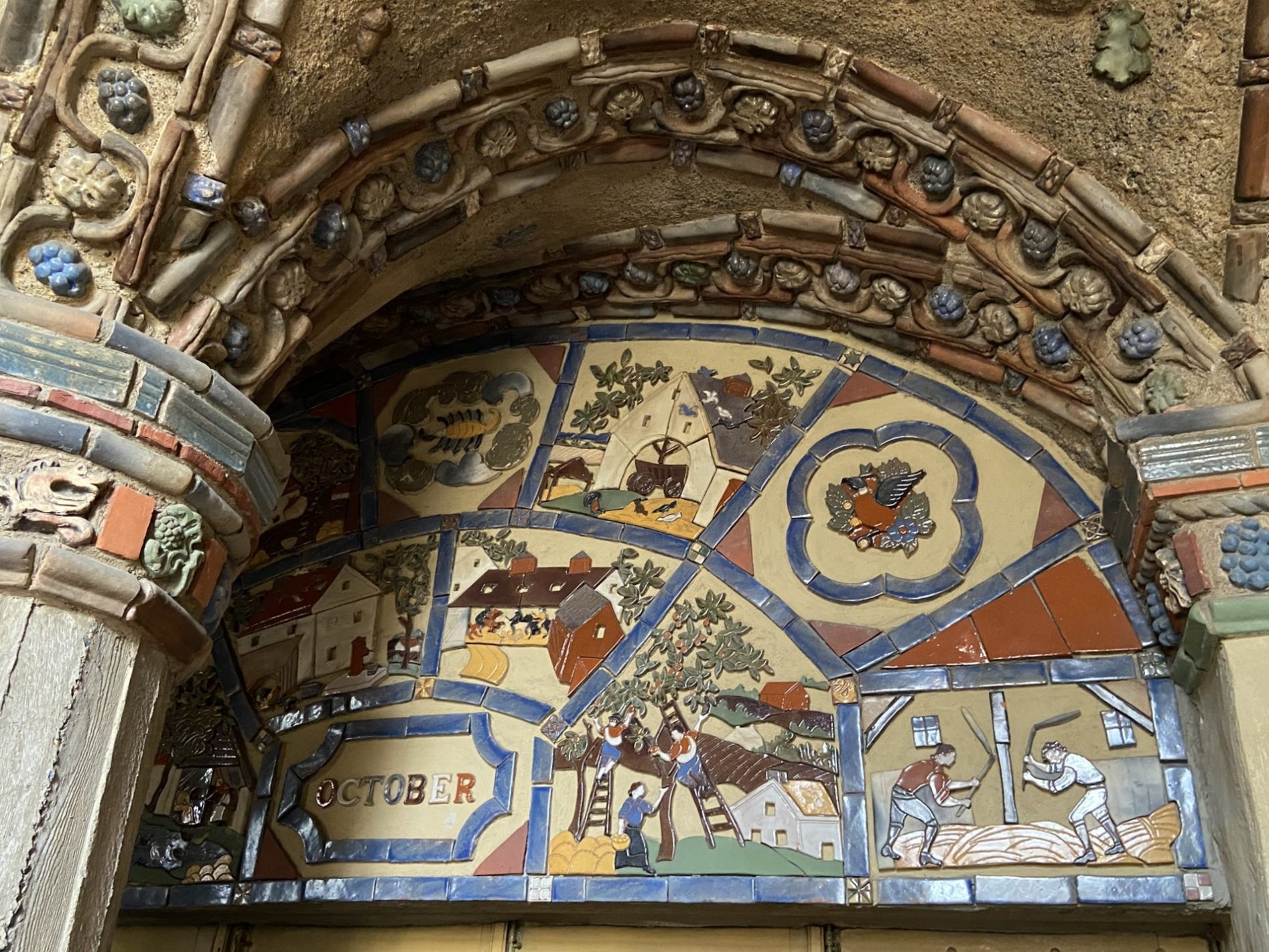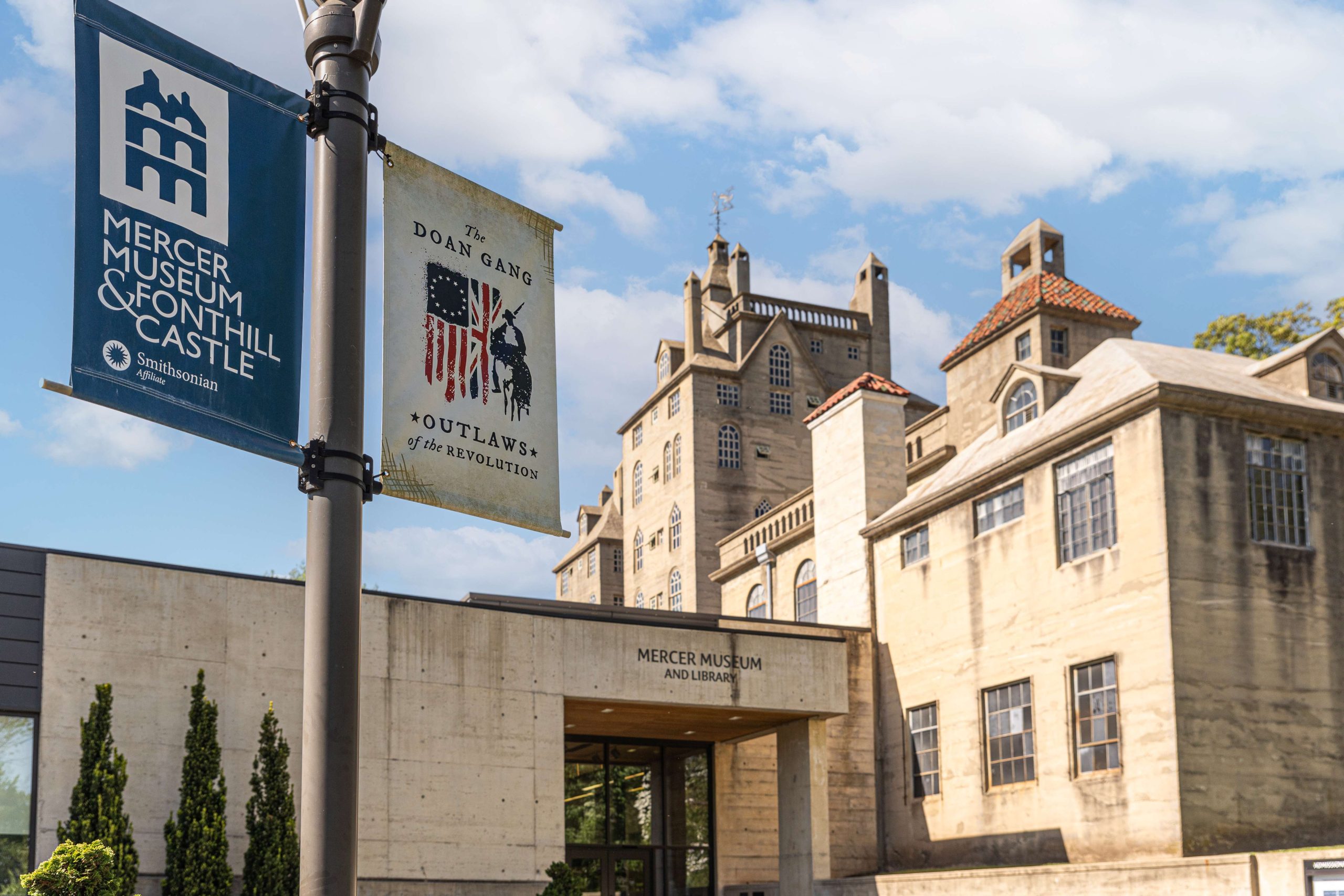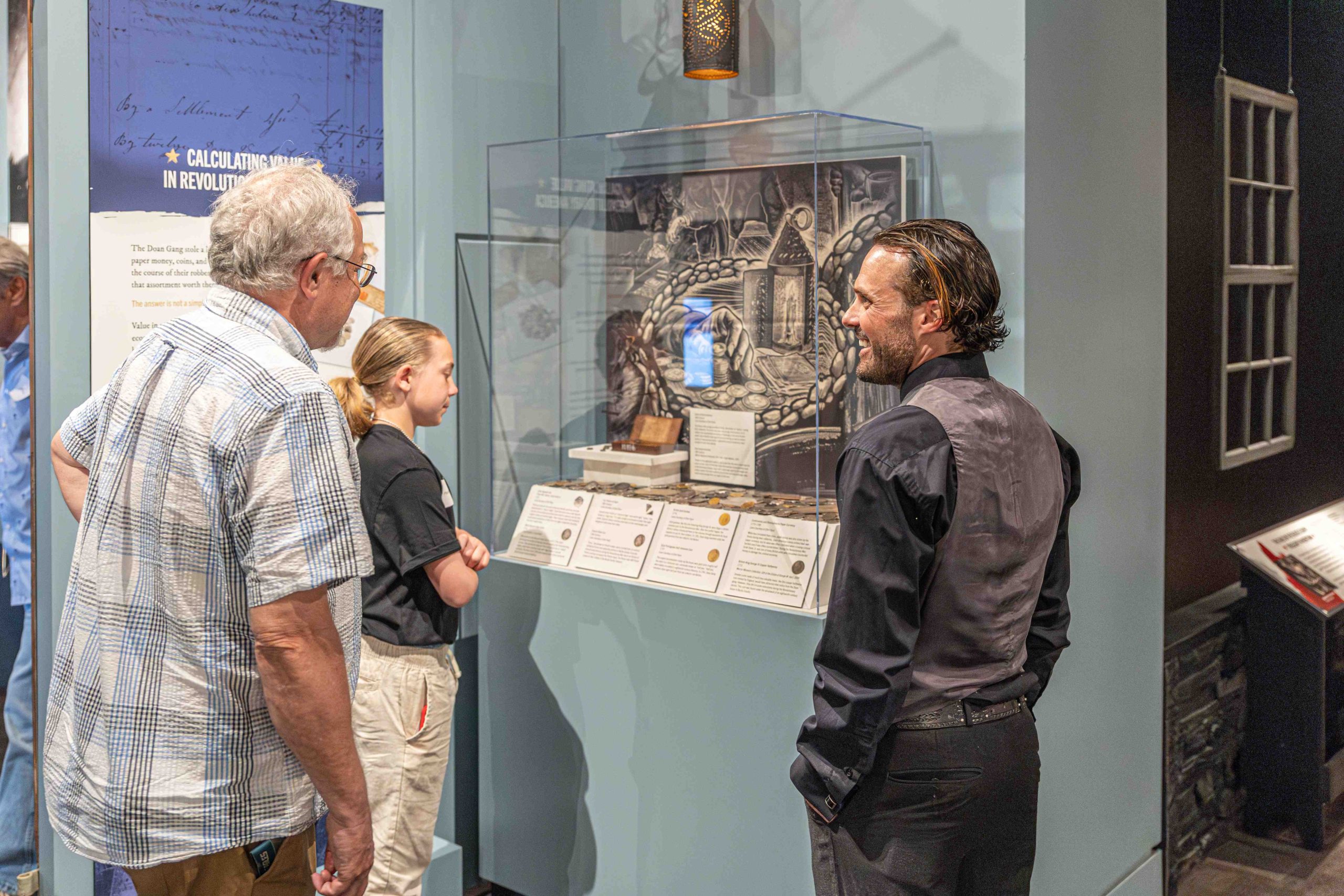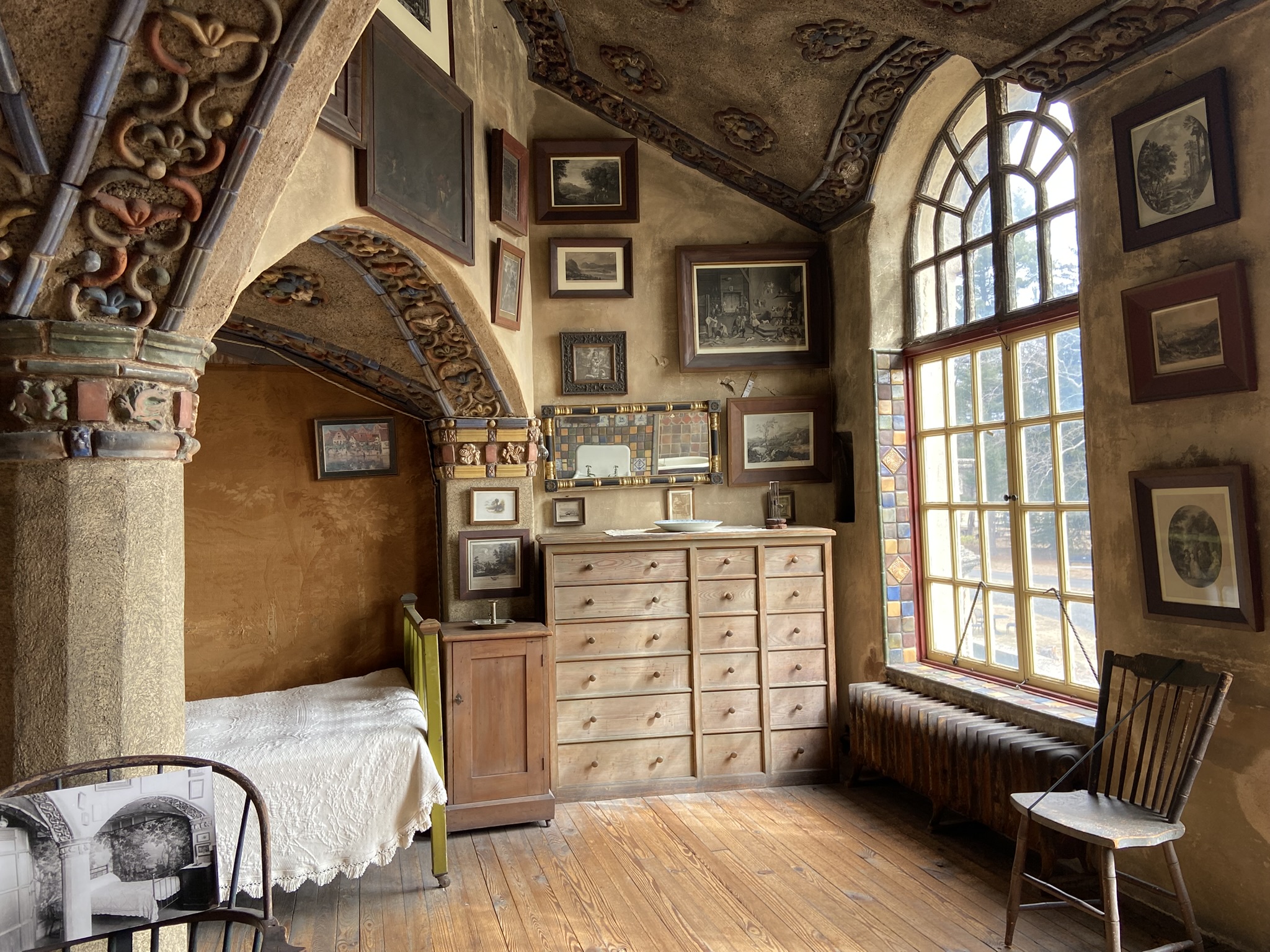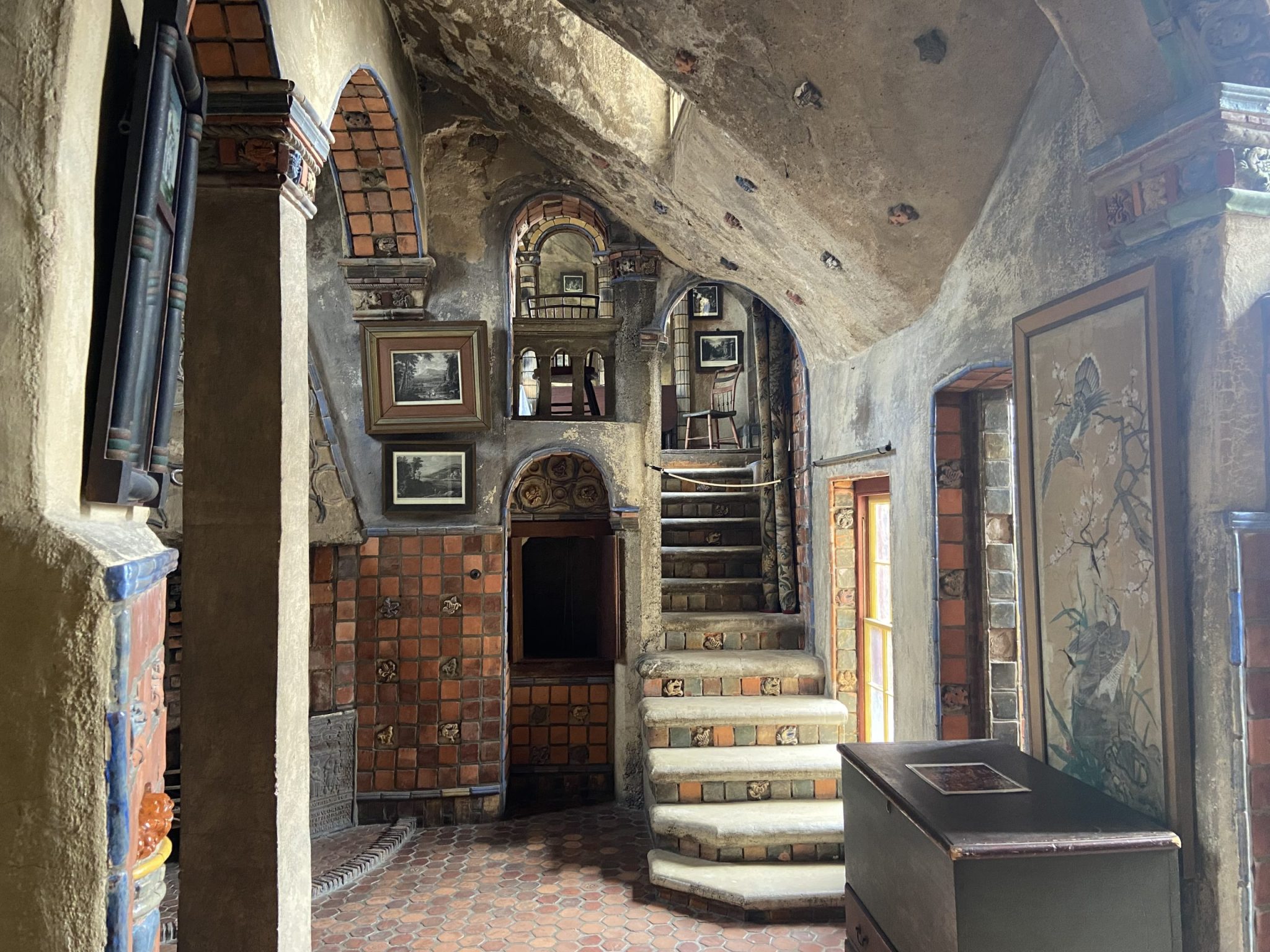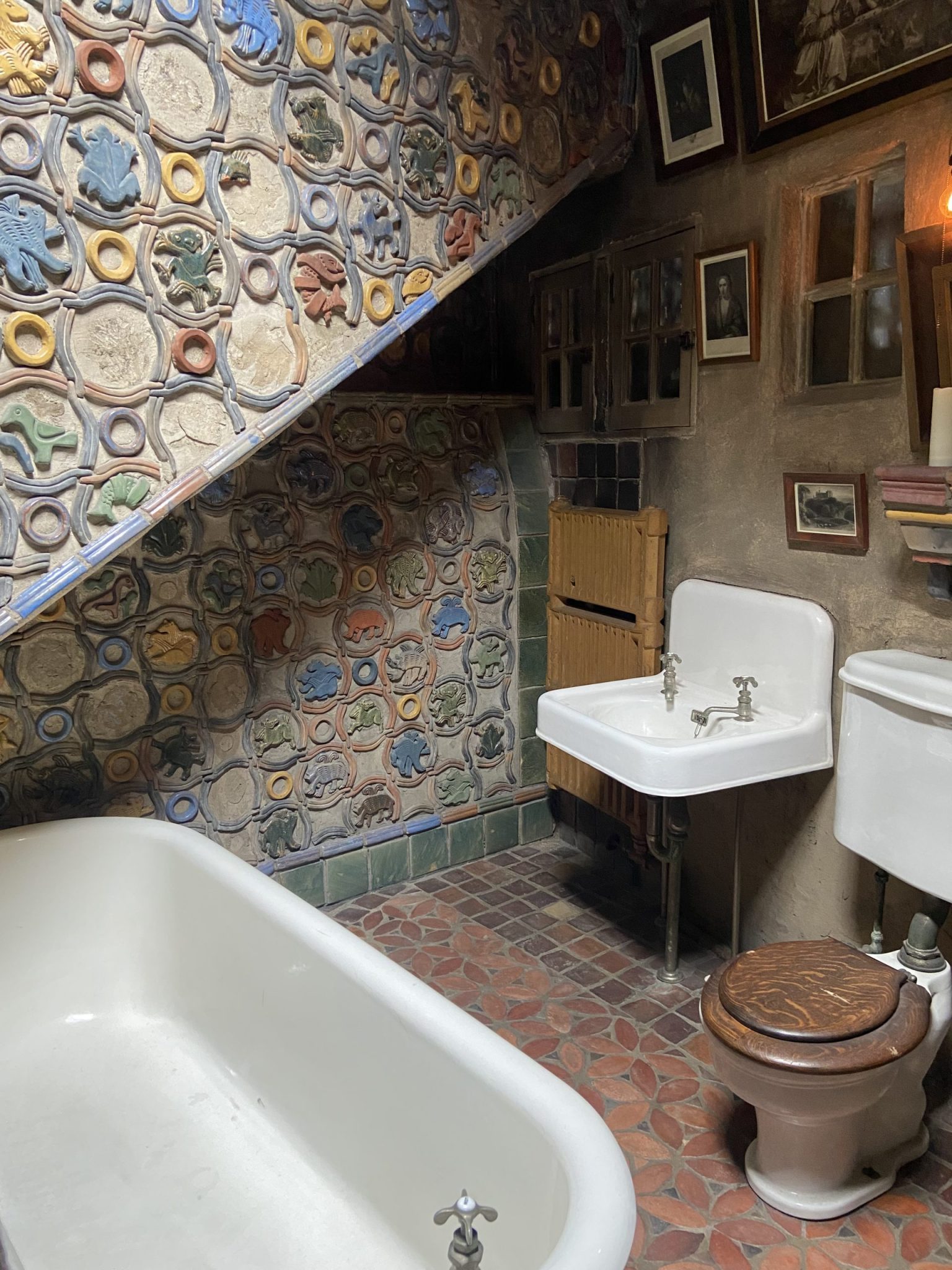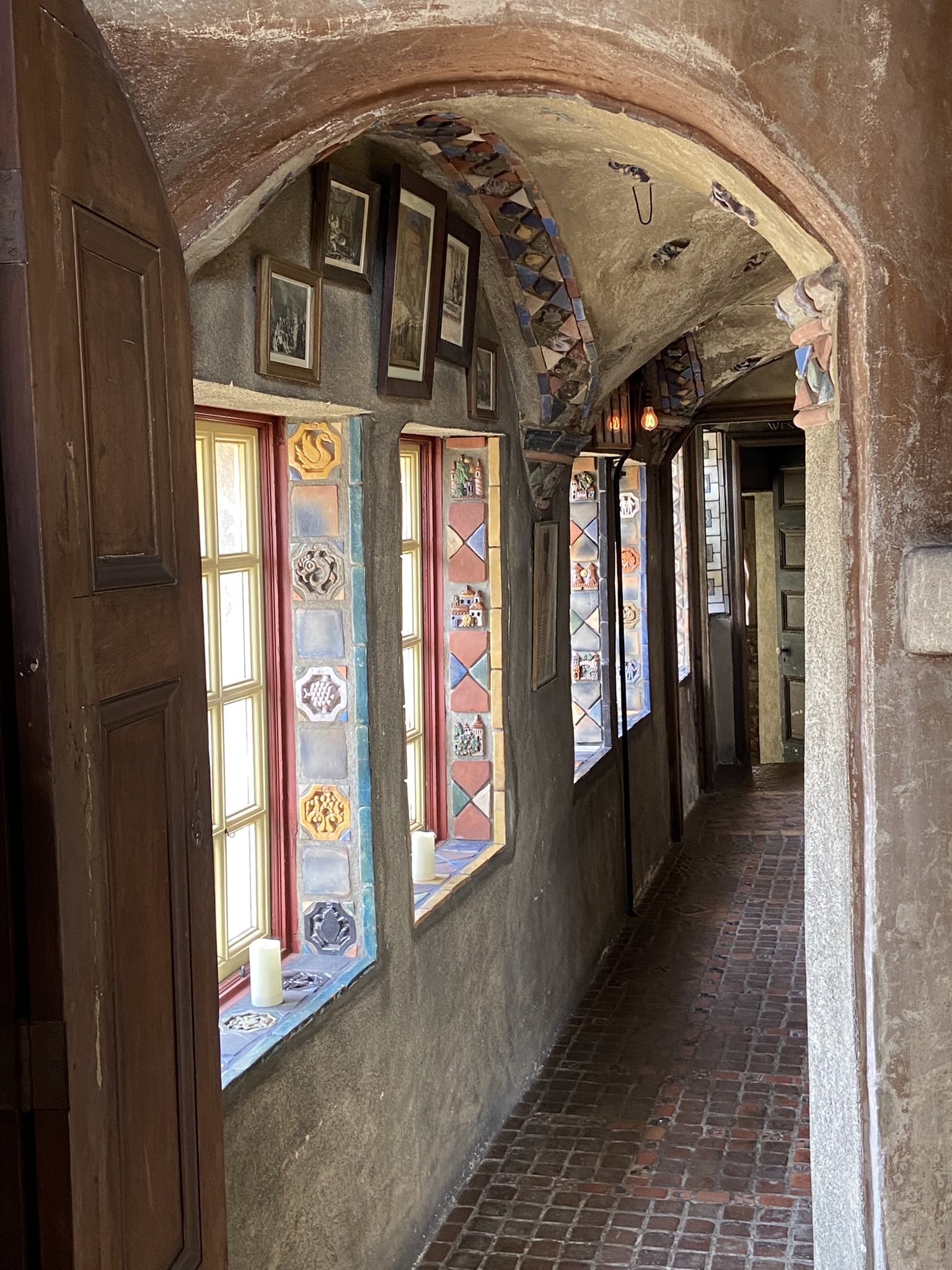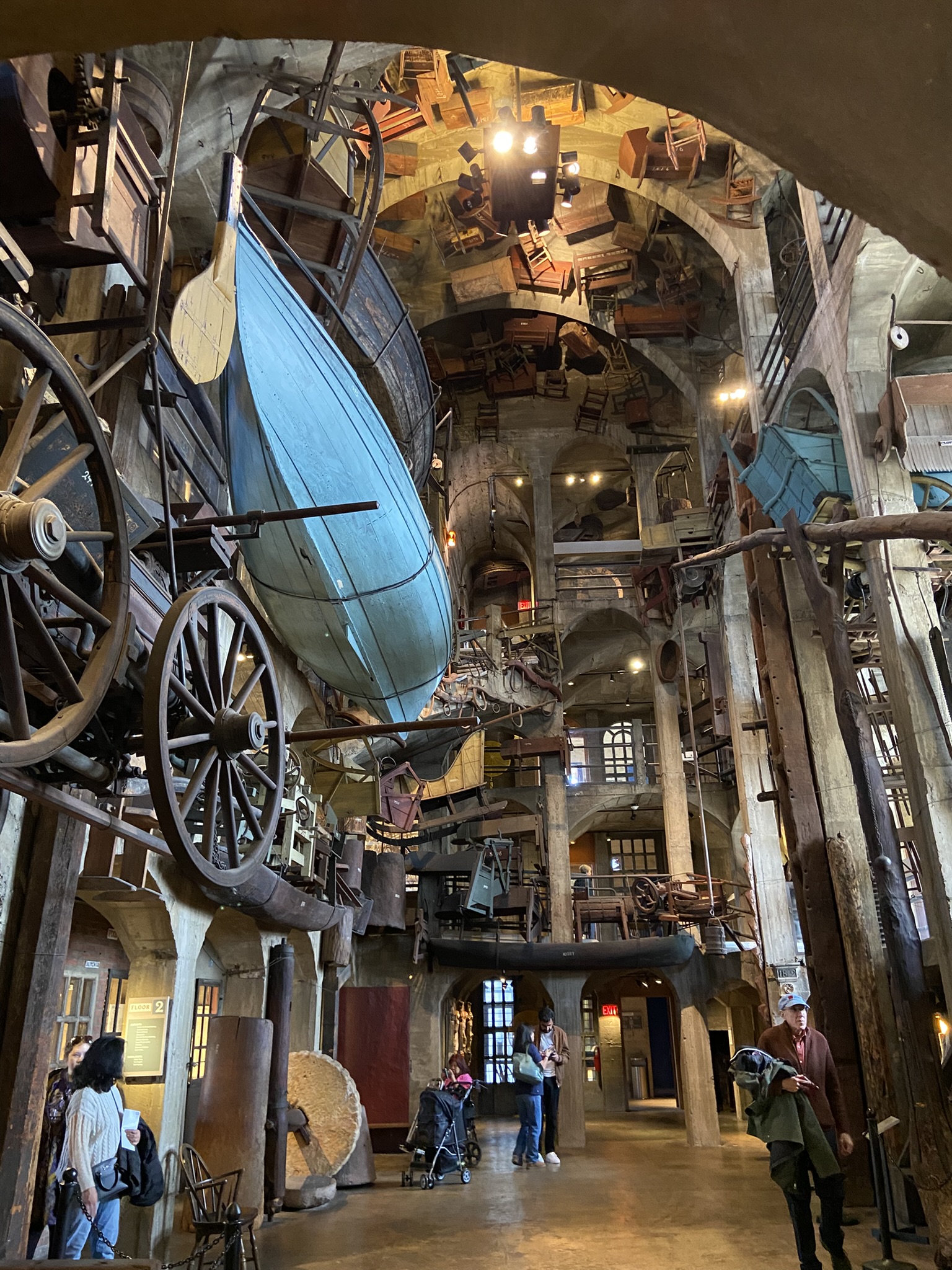Bucks County, just northeast of Philadelphia, has long attracted creative people, from Pennsylvania Impressionist painters in the early 20th century to 21st-century actors and celebrities. One of these, the multi-hyphenate Henry C. Mercer (1856–1930), was an Arts and Crafts tile maker, archaeologist, collector of artifacts, and writer who left a legacy of artistry and craftsmanship that still inspires and intrigues locals and visitors. Mercer’s home and workspace, Fonthill Castle in Doylestown, is a fanciful concrete marvel studded with handmade tiles. Steps from Fonthill, Mercer’s tiles continue to be produced. Also in Doylestown, the Mercer Museum, another concrete castle, displays Mercer’s tens of thousands of pre-industrial, mostly American tools. He believed these enlivened history and celebrated humans’ boundless ingenuity. The museum also presents excellent historical exhibitions, currently “The Doan Gang: Outlaws of the Revolution” (through December 31, 2026), an immersive look at local history during the war.
Mercer’s Vision
Born into a well-to-do Bucks County family, Henry Mercer found his life passions in a roundabout way. He graduated from Harvard in 1879 and passed the Pennsylvania bar, but Mercer then traveled around Europe for eight years, fascinated by castles and antiquities. He worked as a curator and archaeologist at the University of Pennsylvania Museum of Science and Art, leaving in 1897 after a disagreement: Mercer was more of a “my way or the highway” guy. By then two main interests engaged his considerable energies: handmade ceramics, which he learned from a Pennsylvania German potter, and 18th- and early 19th-century objects, gathered from rural yards and old barns, that reflected a vanishing world in the same way that antiquities from older civilizations did. As Mercer put it, “I collected everything I could lay my hands on.”
Mercer’s Arts and Crafts tiles, produced by artisans at his Moravian Pottery and Tile Works, became highly regarded. In 1908, an inheritance from a wealthy aunt enabled Mercer to go on a building spree. He designed Fonthill Castle (1908–1912) as his home, built an expanded Moravian Pottery and Tile Works facility (1911), and planned the Mercer Museum (1913–1916) for his artifact collections. Mercer was an early supporter of the Bucks County Historical Society (BCHS), and after his death in 1930 the society has operated the museum, and later Fonthill, as nonprofit educational institutions. Today Mercer Museum & Fonthill Castle is a Smithsonian affiliate and a member of the prestigious American Alliance of Museums; Fonthill is also a member of Historic Artists’ Homes and Studios. BCHS continues to develop these distinctive sites as community connectors as well as town landmarks, attracting more than 100,000 visitors annually between the two sites.
Visiting Mercer’s Castles
The guided tour at Fonthill Castle offers an information-packed introduction to Mercer’s personal interests. Visitors wind through hallways, up and down steps (the website has an accessibility note), and through room after sometimes-claustrophobic room with countless tiles, 900 prints, and 6,000 books. In designing the mazelike house, Mercer made small clay models of the 44 rooms and positioned them around and atop each other (there are 32 stairwells). Just as deliberate was the use of poured reinforced concrete—to avoid fires—in a multistory building with towers, 21 chimneys, and 200 windows. Though inspired by European castles, Mercer was practical; the house has 10 bathrooms.
Attracted to the Arts and Crafts movement and its championship of practical objects that were handmade with artistry, Mercer innovated in methods of tile production and invented special underglazing techniques. From floor to ceiling, Fonthill’s rooms display his tiles and mosaics, made with clay from Bucks County. Some depict scenes from the Bible, history, literature, or daily life. Besides being a home, Fonthill was an excellent place to show clients his work. Rooms also display collections of Chinese, Persian, Dutch, and Spanish titles. Mercer’s tiles and designs appear in places as varied as Boston’s Isabella Stewart Gardner Museum, the Pennsylvania capitol in Harrisburg, and Grauman’s Chinese Theatre in Hollywood.
It’s a short stroll to what was Mercer’s Moravian Pottery and Tile Works and is now the TileWorks, a “working history” museum and tilery owned by Bucks County. Artisans make Mercer-designed Arts and Crafts tiles for clients as they did in the past, and visitors can see and buy tiles at the shop or take a tour; one tour includes making a tile. The website lists fun classes and events, such as a bluegrass festival.
A mile from Fonthill Castle, the seven-story Mercer Museum has a similar look (castle-like; concrete; jam-packed) but has a modern addition built in 2011 with exhibition space and a Learning Center. A modern gallery explains Mercer’s fascination with pre-industrial American tools and his classification—an organizing principle for the museum—of them by more than 60 trades. It still may not prepare visitors for the highly Instagrammable Central Court, where they look up several stories and see galleries full of intriguing objects as well as boats, chairs, and tables hanging from the ceiling. It helps to study a museum map in advance or check museum signs and select a few sections to see. Among the options are animal husbandry, shoemaking, mining, lighting devices, and printing. Open to the public, the third-floor Mercer Museum Library holds over 15,000 books and has collections that concentrate on Bucks County history, artifacts from before 1850, and Henry Mercer’s life and works, such as the still-in-print Ancient Carpenters’ Tools (1929). Part of the library is the original section designed by Mercer. The library is a valuable resource for genealogical research.
The museum’s family-friendly “The Doan Gang: Outlaws of the Revolution” (website lists special programs), on display now and throughout the 2026 celebration of America’s 250th birthday, is worth a visit in itself. Using artifacts, information panels, and interactive elements, it tells the story of the Bucks County Loyalist family and their friends who plotted and stole in support of the British cause during the American Revolution. There are even tales of lost treasure, but the exhibition has a serious side, looking at different ways neighbors and friends viewed the Revolution and the resulting social upheaval.
Community Connections
During 2024, Mercer Museum and Fonthill Castle provided more than 95 community programs and events that reached 13,000 people of all ages. These includes special Fonthill Castle Evening Tours and Behind the Scenes Tours: Fonthill Castle from Tower to Crypt, as well as Fonthill’s Fourth of July and December’s Holidays at Fonthill Castle, when the house’s rooms are decorated for the season. Over the long term, Fonthill’s 69-acre grounds are gradually being improved for community use, as Henry Mercer wished. The Mercer Museum’s offerings range from Research Library Open Houses and special library programs to family movie nights on the museum’s lawn. There’s also a Mercer Wizarding Academy, a weeklong summer day camp program for children seven to twelve. These are just a few: fun events that are also fundraisers are August’s Fonthill Castle Beer Fest and October’s Cocktails at the Castle at the museum.
Side Dish
In Doylestown’s walkable downtown, Hattery Stove & Still in the boutique Doylestown Inn was once a place dedicated to hats, but today it’s popular for creative American food and a casual, local vibe. Hats with lights in them hang over the bar top, and glass chandeliers adorn exposed ceiling beams. The brunch and lunch menu lists options like a black pepper tuna salad with kale; a Moroccan veggie hash; and a veggie Benedict with a vegetable cake and grilled portobello. Fish tacos and burgers are hearty, and the wide-ranging dinner menu includes mushroom tagliatelle, an udon bowl, and chicken pot pie.
Linda Cabasin is a travel editor and writer who covered the globe at Fodor’s before taking up the freelance life. She’s a contributing editor at Fathom. Follow Linda on Instagram at @lcabasin.
Featured photo: Henry Mercer’s home, Fonthill Castle, is an homage in concrete to European castles. Photo by Mike Squires


